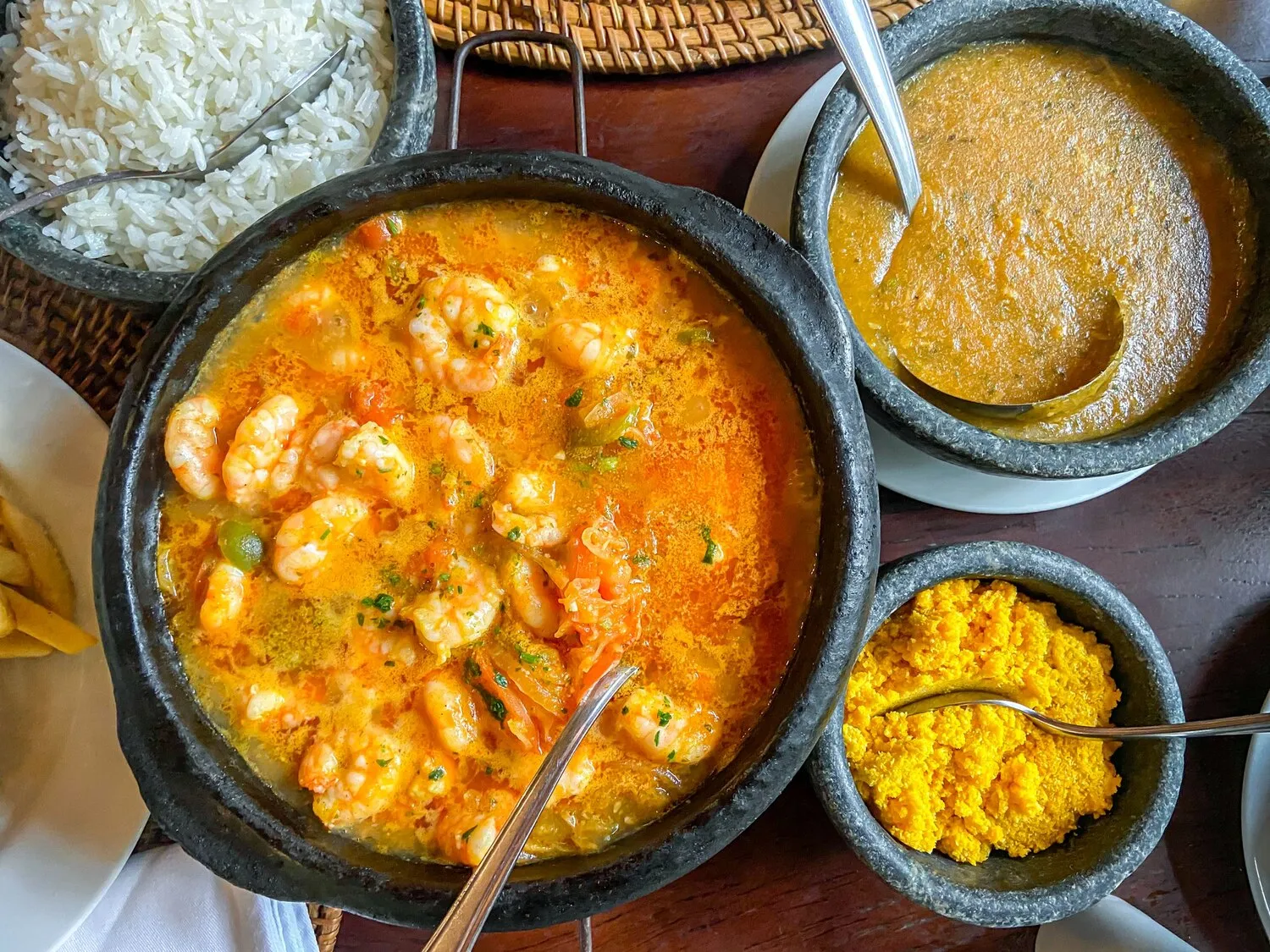
Rendang
A rich and flavorful beef stew cooked in coconut milk and a blend of aromatic spices.
Nutrition Facts
* The % Daily Value (DV) tells you how much a nutrient in a serving of food contributes to a daily diet. 2,000 calories a day is used for general nutrition advice.
Rendang's origins can be traced back to the Minangkabau people of West Sumatra, Indonesia. It developed as a way to preserve meat in the hot and humid climate, utilizing spices with antimicrobial properties. The dish reflects influences from Indian and Middle Eastern cuisine, evident in the use of spices like cardamom, cloves, and cinnamon, brought by traders and migrants over centuries.
Rendang holds significant cultural importance in Minangkabau society and throughout Indonesia. It's more than just a dish; it symbolizes wealth, celebration, and tradition.
Ceremonial Significance
Rendang is a staple at Minangkabau ceremonial feasts (kenduri), weddings, Eid al-Fitr (Hari Raya Idul Fitri), and other important occasions. It represents prosperity and is offered as a symbol of respect and hospitality.
Philosophical Values
Among the Minangkabau, the four main ingredients of Rendang are said to represent the whole of Minangkabau society. Meat (beef) symbolizes the traditional clan leaders (Niniak Mamak), coconut milk represents the intellectuals (Cadiak Pandai), chilies represent the religious teachers (Alim Ulama), and spice mix represents the whole of Minangkabau society.
Culinary Heritage
Rendang is considered a culinary heritage of Indonesia and is often promoted as a national dish. Its preparation is a skill passed down through generations, with families often having their own unique recipes and variations.
Rendang is a complex and deeply flavorful dish characterized by its rich, spicy, and savory taste profile. The slow cooking process allows the coconut milk and spices to infuse the beef, creating a tender and intensely aromatic stew.
The dominant flavors are a blend of rich coconut milk, intense chili heat, and a symphony of aromatic spices. Galangal, ginger, turmeric, lemongrass, garlic, shallots, and chilies form the base spice paste (bumbu). Kaffir lime leaves add a citrusy note, while other spices like cloves, cinnamon, cardamom, and star anise contribute warmth and depth. The beef absorbs these flavors over hours of slow cooking, resulting in a melt-in-your-mouth texture and a deeply savory, slightly sweet, and profoundly spicy experience.
Spice Paste Preparation
Use fresh, high-quality spices for the most aromatic flavor. Grind the spices into a fine paste using a mortar and pestle or a food processor. Properly sautéing the spice paste until fragrant is crucial for developing the complex flavors.
Slow Cooking is Key
Rendang requires a long, slow cooking process to tenderize the beef and allow the spices to fully infuse the meat. Simmering over low heat for several hours is essential for achieving the desired texture and flavor.
Coconut Milk Reduction
The coconut milk needs to be cooked down until it transforms into a rich, dark brown caramelized sauce. This process requires constant stirring to prevent burning and ensures the signature Rendang flavor.
Beef Selection
Beef chuck or round roast are commonly used because they become incredibly tender after slow cooking. Cut the beef into bite-sized pieces for even cooking and maximum flavor absorption.
Explore additional Stew dishes and restaurants
Explore StewDiscover top dining spots and culinary experiences in Antwerpen.
Explore AntwerpenLearn more about the food culture, restaurant scene, and culinary heritage of Belgium.
Explore Belgium